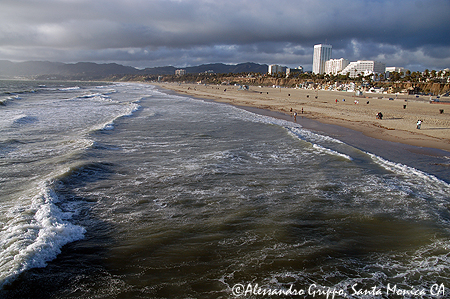
| ||||||||
| GEOL 5 - EARTH HISTORY | Last Updated • May 31, 2014 | |||||||
This class is a 4-units, general education class that includes both lecture and lab; an introduction to the basic principles of geology and plate tectonics is followed by a more detailed study of sedimentary rocks and the principles of stratigraphy, sedimentology, and paleontology. Knowledge of these principles will help the students understand how Earth history can be deciphered through the study of the rock and fossil record. The main physical, chemical and biological changes that occurred in the 4.6 billion years of existence of our planet will be outlined. If you already have a basic knowledge of geology (for instance, you already took Geology 1 or Geology 4) you might find yourself at a slight advantage. Nonetheless, you will see throughout the class that all materials will be explained thoroughly and the class is fully accessible to anyone with a genuine curiosity and desire to learn. You also need to be aware - again - that this class will require continuous and constant attention and that, in order to succeed, you will need to dedicate a considerable amount of time to study and work on its materials.
This class is fully transferable to UC and CSU, but it might not satisfy GE requirements at some universities.
Syllabus: Click here for a .pdf copy of the Syllabus Class Hours: Tuesday (lecture), 6:45-9:50, Drescher Hall, room 128 Thursday (lab), 6:45-9:50, Drescher Hall, room 128 Required Textbooks: Lecture Textbook: S. M. Stanley, Earth System History, 3rd edition (2009), W. H. Freeman and Company, New York Lecture Textbook: J. W. Schopf, Cradle of Life, 1st edition (1999), Princeton University Press, Princeton and Oxford Lab Manual:H. L. Levin and M. S. Smith, Laboratory Studies in Earth History, 10th edition About these textbooks, please note: It is fine to buy a used copy of both Lecture Textbooks. If for any reason you can not find a copy of these two textbooks at the SMC bookstore, look on Amazon (links are provided by clicking on the book titles above) or at the UCLA bookstore. For what concerns the LAB MANUAL: DO NOT BUY A USED COPY FOR ANY REASON; questions and exercises in the lab manual require that pages are teared off and turned in to me for grading after a lab. Many students who bought used copies in the past, either from the bookstore or from other students, soon found out that they had incomplete manuals in their hands, with several missing pages.
I will only accept lab work from the original pages of the current edition of the lab manual (10th edition).
Exams: All exams include lecture, lab and home assignments materials. The final exam will be partially cumulative: it will include a few questions on older materials covered in previous tests.
Exam dates are as follows: Please, refer to the class syllabus for further information and/or details.
 The principle of cross-cutting relationships, illustrated | GEOL 31 - OCEANOGRAPHY | Last Updated • May 31, 2014
| This class is a three-units, general education class. An introduction to the basic principles of geology and plate tectonics is followed by a discussion on the chemical and physical properties of water, a description of marine environments and a discussion on the biological aspects of the world's oceans.
Syllabus: Click here for a .pdf copy of the Syllabus Class Hours: Monday and Wednesday, 9:30 to 10:50, Math Complex, room 2 Required Textbook: A. P. Trujillo, and H. V. Thurman, Essentials of Oceanography, 10th edition, Prentice Hall
It is fine to buy a used copy of the Textbook. If for any reason you can not find a copy of the textbook at the SMC bookstore, look on Amazon (a link is provided by clicking on the book title above) or at the UCLA bookstore.
Please, refer to the class syllabus for further information and/or details.
 Shallow water waves in Santa Monica, California
| |||||